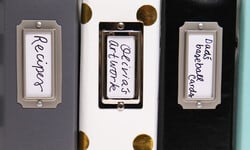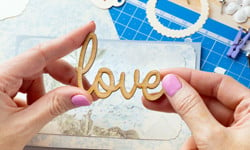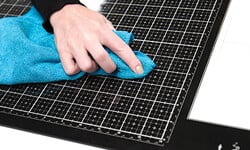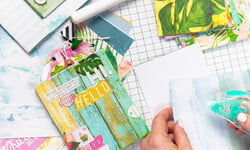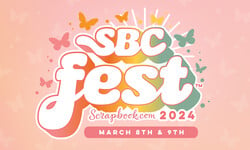Photographing your scrapbook layouts with a digital camera is a great way to ensure that your projects are preserved forever even if the original gets lost, ruined or damaged. Once you have a digital photo of your layout, then you can also share it to the Scrapbook.com gallery or other online sites. The following information was provided as a tip by Scrapbook.com member DigigDude.
When you photograph layouts NEVER use a flash. If you don't have a tripod yet, you should get one as that will make sure your photos are crisp. If you take it in bright enough light you can just hold the camera by hand (sunlight is great) or even in-doors. The slowest you can expect to take a picture by hand is around 1/60th of a second. Below that you need a tripod or a stable surface to rest the camera on and use the camera's built-in timer or a remote to take the actual picture.
Here's what I do. We have an art board easel for our kids with a chalk board on one side, whiteboard on the other, etc. I put the layout on that upright (if it is floppy without card-stock we use temporary stickum to hold it upright). You could do the same with any wall, door etc. Don't use clips or pins unless you want them in the picture.
Don't use the "Auto" exposure mode on the camera; use the "Program" mode. This mode allows you to set the camera to specific settings, like ISO speed, White Balance (WB), timer and turning the flash off. Then put the camera on timer mode full resolution, NO FLASH. This forces the camera to take a picture very slowly if done in-doors (make sure you override the ISO setting and set it to 50 or 100. This reduces the color noise and gives you a better final image. The lower the ISO setting, the better the quality, but digital cameras tend to try and set this to 400 in low light conditions.
Put the camera in timer mode on a stable surface or tripod parallel to the layout, and then focus on the layout so it fits in the camera frame just barely, and press the shutter button to start the timer. Don't touch the camera until it has taken the picture. Reason for Camera and Layout Parallel: This reduces the distortion you see due to perspective.
If you've taken the picture correctly you should have a good picture of your layout, but there will be extra background surrounding the layout you want to get rid of before posting it. So, stick this image into a graphics program that allows you to crop images and select just your layout. Crop and save the results. You can also do some color correction, increase saturation, etc. at this point to compensate for lighting.
If you are using a good graphics editor like Photoshop, you can use the polygon tool and select the corners of your layout, then using the distort free transform feature you can drag the corners of your cropped layout into the corners of the display and remove any lingering distortion from not being 100% parallel when taking the picture.
Three final notes:
1. Learn about white balance and how it works on your camera. You can probably use the auto mode, but if taken in-doors under lights, you may end up blue/green or yellowish because the white balance needs adjusting. This is because of the type of light put out by incandescent and fluorescent lights are different. Manually setting white balance is best, but I always forget to unset it when done and the next time I take pictures they turn out really weird colors.
2. Since you have your layout sitting there you can use lights, set it up in the sunlight(always good) or use multiple lights to illuminate the layout the way you really want it to look. Clip on reading lights for the easel work well, but can be harsh. Experiment with your own setup and lighting to get the best results.
3. I have also heard of people building light boxes for taking pictures of layouts, but this is not something I would recommend unless you really understand the focal length of your camera and how to build/mount/light a 12x12 or 12x24 object using a light box.

